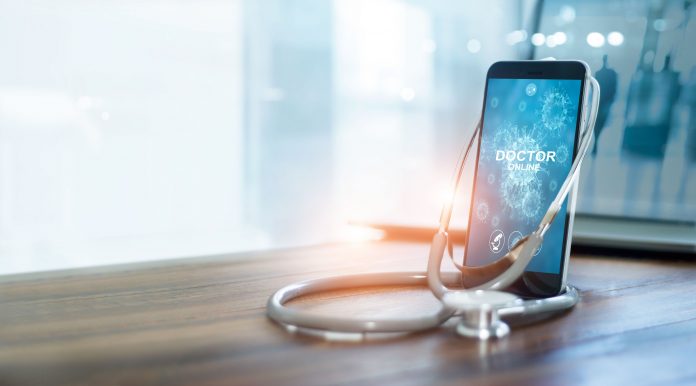A clearer balance between primary care communications channels is now emerging from the pandemic. While there are new questions on practice phone costs and patient inclusion, the aim should be for an “omnichannel” approach, argues Paul Bensley, managing director of X-on
Six months into the evolving picture of pandemic-era primary care and a sharper sense of what the new landscape for day-to-day practice management will be has emerged.
As for all health professionals, the pandemic has clearly placed huge strains operationally and emotionally on general practice, and anyone believing that GPs had a comparatively less demanding time at the outset of the pandemic is very mistaken. As a result of the pandemic, stress levels are high and a recent British Medical Association poll showed that as many as one in six GPs is considering leaving the NHS or retiring early.
In parallel to those fundamental human issues, a truer picture of the new, pragmatic functioning by practices has also taken shape. As a result, a few myths have been exposed and new issues have emerged that need to be addressed.
At the outset of the pandemic, there was a sense the health catastrophe would herald the wide use of video and online doctor-patient consultation, fulfilling a central prophesy outlined within the NHS Long Term Plan for “digital-first” primary care.
This was to be a future where care would be delivered by online consultations and in turn video would evolve to bolster the consultation channels. If there was any upside to the crisis, the view was that a new digitalised communication would be the norm post-COVID.
The new balance of primary care communications channels
The reality according to feedback from GPs and CCGs and official central data from NHS Digital on GP appointments, is perhaps not quite as predicted. The data shows that the trend for online and video consultations is in fact down compared with the start of the year before the pandemic. The percentage share of telephone consultations is significantly up compared with the pre-COVID days.
In the new clinical environment for GPs, this shows a more complex mix between the channels. There are some doctors who will try to use video to support every consultation, but most will not.
There are some conditions for which it is a highly supportive tool, but others such as muscular-skeletal and skin-related issues for which clinicians report that video is not so effective.
As the “total triage” model develops, even when a video consultation is likely, GPs are also tending to phone a patient first. This is because in 2020 swathes of the UK still do not have sufficient bandwidth for video and, as an alternative, phone coverage is usually guaranteed.
Even if a patient is expecting a video consultation, they take longer to set up and the patient needs to be in the right place for connectivity. On some occasions, video is also not a viable option as the patient considers it a potential invasion of privacy or security risk.
So video may be a developing and important tool for the future but is not a panacea. The telephone has been firmly emphasised – perhaps re-emphasised – as having a fundamental role, even when a patient’s condition suggests a video consultation will be useful.
The Royal College of General Practitioners was quick to clarify the rules too in the new order after Health Secretary Matt Hancock’s stated wish that unless there were good clinical reasons all consultations should be teleconsultations.
The College dismissed any move to a “totally, or even predominantly remote general practice service”, its chair Professor Martin Marshall emphasising that in many cases there needed to be physical examinations and vaccinations, and many patients valued GPs’ relationship-based care. To date this last point has been overlooked in the debate on the look of future primary care.
Let’s not forget the patient
So let’s not forget the patient. Ideally, should it not be the patient that chooses the medium of their choice for their consultation, of course with guidance and some preference from the GP, based on their clinical expertise?
The aim from now on should be to pursue what is emerging as an “omnichannel” approach – supporting communication with patients through voice, text, online and video – providing GPs with the tools needed in order to be able to contact their patients as efficiently and quickly as possible.
This will also reduce any chance of patients being disadvantaged, or deprived of inclusion, in not being able to contact their GP surgery if they do not, for instance, have internet access, adequate bandwidth or the latest smartphone.
At the same time, there will need to be support through developing further call management technology to help resolve the amount of time GPs spend on failed contact attempts, resulting in calls going to voicemail or being unanswered, or video calls failing during setup.
Reviewing practice telephone costs
In parallel, practice telephone costs compared with, for instance, video costs needs to be looked at. Costs at practice level vary significantly depending on individual contracts and the level of support from their clinical commissioning group.
There should be a position now, at a time when outbound calls from practices have risen during the pandemic and likely to remain comparatively high, where telco providers are able to remove or minimise call costs from the overall cost equation.
This would eradicate any chance of practices being penalised by legacy contracts and in turn the means by which patient care is delivered being impacted.
Technology will continue to influence general practice and bring efficiencies in the way it is delivered day-to-day, both irrespective of the pandemic, for instance integrating the recording of a triage session with the practice’s clinical system, and also as a direct result of it.
But ultimately it is the patient, their care and preservation of the doctor-patient relationship that should be the prime concern as technology continues to develop within primary care.











